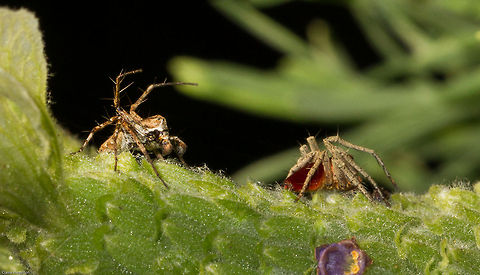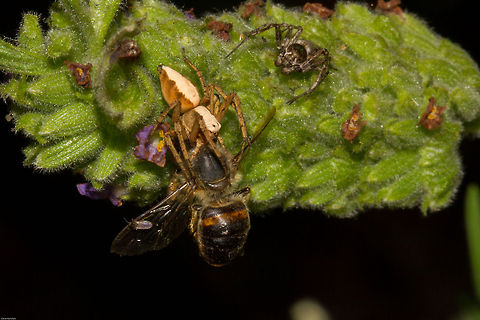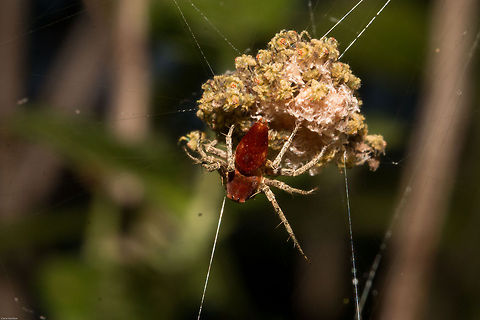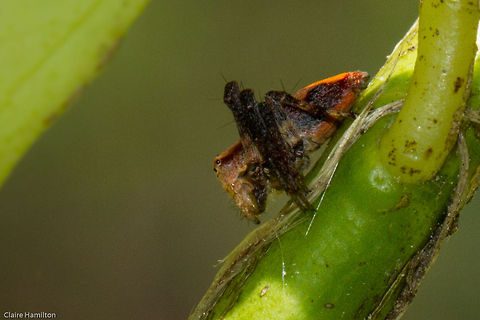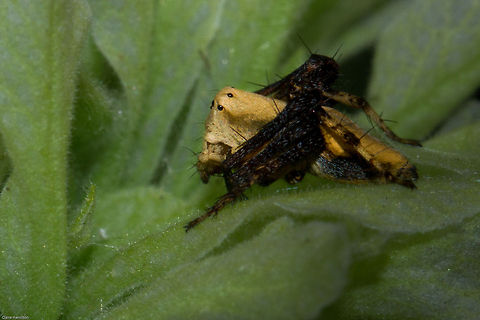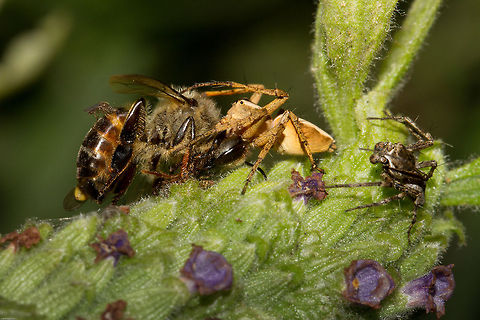
Appearance
Both male and female total length 5-7mm. Carapace colour varying from black to pinkish orange;tegumant with short dense, velvety appearance. Abdomen is sometimes pinkish with dark spots. legs are a uniform creamish yellow.Oxyope are distinguishable from other Oxyopidae by having the posterior row of eyes strongly precurved. The face is vertical and leg IV is longer than leg III
Six of the eight eyes of Oxyopid spiders are arranged in a hexagon-like pattern, more or less on a prominent hump on the front upper corner of the prosoma. The other two eyes are smaller, less conspicuous, and generally are situated in front of and below the other six. The basal parts of the chelicerae of most species are large, vertical and parallel, which combine with the bluff front end, a "high forehead" to the prosoma, to give most species a peculiar "flat-faced" appearance.
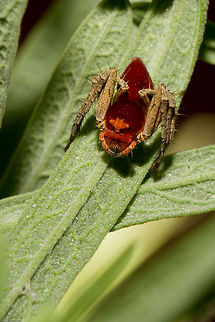
Behavior
Lynx spiders, in spite of being largely ambush hunters, are very speedy runners and leapers, alert and with good vision. Except when defending egg purses, many tend to flee rapidly when approached by predators or large creatures such as humans. They tend not to be very aggressive towards other members of their own species, and sometimes meet casually in small groups. Possibly as an extreme example, at least one member of the genus Tapinillus is remarkable as being one of the few social spiders, living in colonies with communal feeding, cooperative brood care, and generational overlap.References:
Some text fragments are auto parsed from Wikipedia.
http://en.wikipedia.org/wiki/Lynx_spiderhttp://eol.org/pages/1198951/overview
Field Guide to Spiders Dr Ansie Dippenaar-Schoeman LAPA 2014
